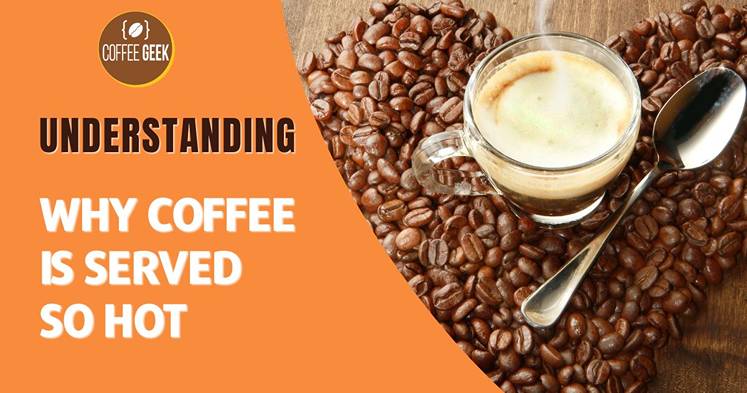A piping hot cup of coffee is as much a sensory experience as it is a need for many coffee lovers. Why is coffee served so hot?
It’s not just about brewing the coffee beans – it’s about embracing the steam, the aroma, and the right temperature of the hot liquid swirling in your cozy mug.
But ever wondered why is coffee served so hot? Let’s take a deep dive into that steaming cup of morning ritual.
Why is Coffee Often Served Really Hot?
Impact of Temperature on Coffee Taste

Why is coffee is served hot? Coffee is sometimes served even really hot because high temperature greatly affects the overall taste of the brew. Bitter molecules are more present in coffee when it’s hot.
This gives hot coffee a different flavor profile compared to cold coffee or cold brew.
Hence, a fan of hot coffee may not like a cold brew or iced coffee as much, and vice versa for a cold coffee lover.
Popular Coffee Cultures and Their Preference for Hot Coffee
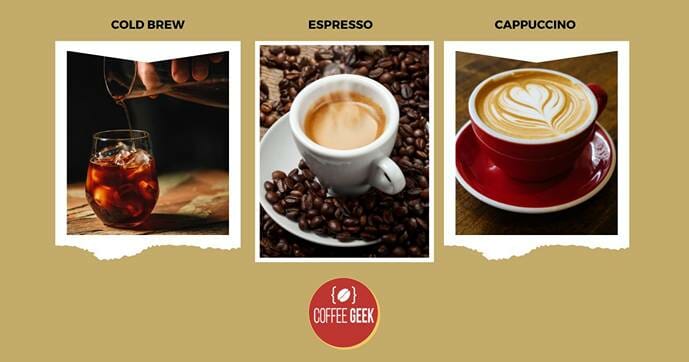
Many popular coffee cultures drink their coffee piping hot. From sipping a tiny cup of hot espresso in Italy to a foamy and steam cappuccino in France, hot coffee is served everywhere.
This tradition of enjoying hot coffee draws coffee drinkers into coffee shops from Starbucks to Dunkin Donuts worldwide.
How Serving Temperature Affects Coffee Aroma
Another interesting aspect is the way heat impacts the release of aromatic compounds in coffee. A hot cup of coffee gives off a much stronger, much richer aroma compared to a cold beverage which helps you understand why is coffee served so hot.

It’s that distinct fragrance of a hot brew that many coffee aficionados often seek, complementing the taste and experience of the hot beverage.
The Art of Drinking Hot Coffee Without Burning Your Tongue
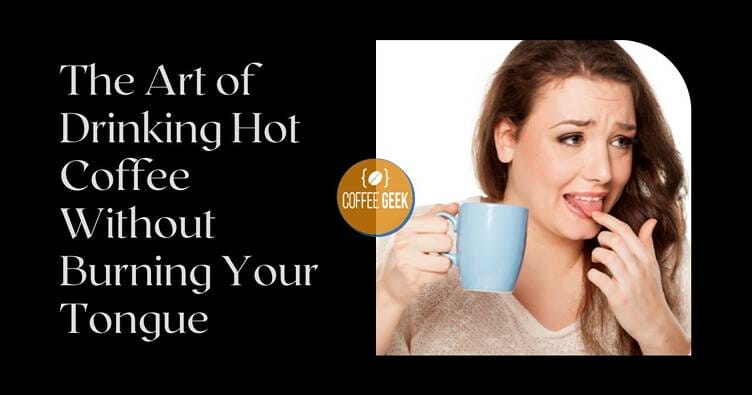
Understanding the Right Temperature for Sipping Hot Coffee
To savor a hot cup of coffee without burning your tongue, understanding the right temperature to sip is critical. The ideal temperature for serving coffee is around 180 degrees F, which is hot but not scalding.
Anything much hotter might cause discomfort as the taste receptor on your tongue can get shocked from the high temperature.
How to Cool Down Your Coffee Quickly Without Affecting Taste

One trick to cool down your coffee without disrupting its taste is by using an insulating coffee cup. The thick walls of this type of coffee mug helps maintain the coffee temperature but reduces the external surface area exposed to the heat.
This lets you enjoy your coffee at the best temperature, without the unwanted burns.
Best Served Coffee: Hot, Warm or Cold?
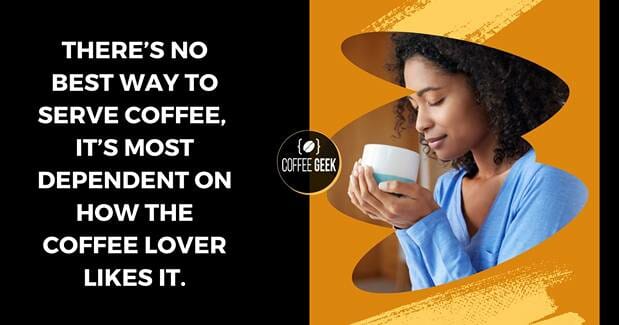
Whether you like your coffee hot, warm or cold depends largely on your personal preference as a coffee drinker. Some people like theirs steaming hot, others want it just hot enough to sip while others hate hot drinks and prefer iced coffee.
There’s no best way to serve coffee, it’s most dependent on how the coffee lover likes it.
Is Coffee Best Served Hot or Cold?
Hot Coffee Vs Cold Brew: A Taste Profile Comparison
The hot-versus-cold coffee debate is a classic battle in the coffee world. A hot brew can be full-bodied and robust with an aromatic punch, while a cold brew is typically smooth, sweet, and subdued.
But it’s also tricky because hot coffee cools over time, altering flavors and aroma in the process. On the other hand, an iced coffee can dilute as it warms up, changing its original taste profile.
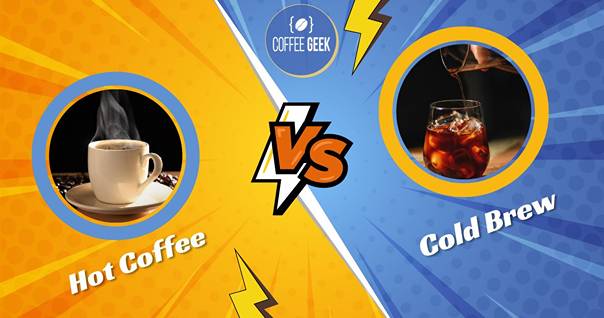
How to Serve Coffee at the Perfect Temperature
Serving coffee at the perfect temperature can be achieved with the careful use of a coffee machine. Many coffee machines will indicate when the temperature is right for brewing and subsequently, serving.
A temperature gauge can also come in handy to ensure your coffee is served at your preference of temperature.
Exploring the Importance of Serving Temperature in Different Coffee Drinks
Different types of coffee drinks require different serving temperatures. An espresso, for example, is usually served much hotter than a macchiato.
A lukewarm latte or cappuccino might seem odd to someone used to a hot one. A coffee drink’s temperature can really define its character.
How to Cool Down Your Coffee Without Waiting for Long
Understanding the Science of Cooling Hot Drinks
The science behind cooling hot drinks like coffee involves increasing surface area and heat dissipation. The easiest way to cool down a hot cup of coffee is to simply let it sit and allow heat to escape naturally.
But moving it to a wider cup can also help, since a larger surface area allows more heat to be released at once.
Safe Ways to Reduce Your Coffee’s Temperature

A simple and safe way to reduce your coffee’s temperature is to add a splash of cold water or cold milk. Stirring your coffee helps too.
However, patience is key – trying to quickly cool down your hot coffee by putting it in the freezer or refrigerator can result in a temperature shock, causing the coffee flavors and aroma to die down.
Common Mistakes to Avoid When Cooling Down Your Coffee

One of the most common mistakes people make when cooling down their coffee is to let it sit too long. This causes the coffee to lose its flavor and turn bitter. Using ice cubes can also be problematic as it dilutes the coffee.
To cool your coffee without making these slip-ups, consider adding coffee ice cubes instead of regular ice, so as not to disrupt the original coffee taste.
High Temperature Coffee Serving: Health Reasons?
Impact of Hot Coffee on Oral Health
While we love our hot brew, drinking very hot coffee often can cause temporary damage to our taste receptors, affecting our capacity to taste.
Furthermore, consistent exposure of our oral tissues to hot drinks can lead to chronic conditions like mouth ulcers or even oral cancer in severe cases.

Hot Beverages and Their Effects on Digestive System
Hot beverages like coffee have a mixed bag of effects on our digestive system. On one hand, hot drinks can help digestion by promoting healthy bowel movement.
But, on the flip side, very hot drinks can also lead to heartburn or reflux in some individuals.
Health Benefits and Risks Associated with Drinking Hot Coffee
The health pros and cons of drinking hot coffee are many. On a positive note, a hot cup of coffee can potentially help increase mental alertness, improve mood, and even contribute to weight loss efforts due to its metabolism-speeding properties.
But drinking coffee that’s too hot can also cause burns, harm the stomach lining, and in long term, contribute to certain health conditions such as esophageal cancer.
| Reason | Explanation |
|---|---|
| Flavor Enhancement | Heat helps release and intensify the aromatic compounds in coffee, resulting in a richer and more complex flavor profile. |
| Comfort and Tradition | Hot coffee is a longstanding cultural tradition, providing warmth and comfort, especially in cold climates. |
| Caffeine Solubility | Heat aids in dissolving caffeine and other soluble compounds, ensuring a consistent caffeine content in each cup. |
| Sensory Experience | Sipping a hot beverage engages multiple senses, including taste, smell, and touch, enhancing the overall sensory experience. |
| Aromatics Release | The heat of coffee releases volatile aromatic compounds, contributing to the pleasing aroma that accompanies a fresh cup of coffee. |
| Bitterness Balance | High temperatures can balance the bitterness of coffee, making it more palatable by reducing perceived bitterness. |
| Immediate Consumption | Hot coffee is ready to drink right away, making it convenient for immediate consumption, whether at home or on the go. |
| Health Benefits of Warmth | Warm beverages, like hot coffee, can have soothing effects on the throat and can provide comfort during cold or flu seasons. |
| Extended Enjoyment | Hot coffee remains enjoyable over a longer period, allowing people to savor their drink slowly without it becoming tepid too quickly. |
| Customization | Serving coffee hot allows for customization with added ingredients like cream, sugar, or flavorings, which can blend better in a hot liquid. |
People Also Ask
Why is popular coffee usually served so hot?
The primary reason is to guarantee freshness. A high temperature helps to keep the coffee hot for a longer period, allowing the flavours to fully develop.
Coffee is usually brewed at a temperature of around 195 degrees celsius which also ensure it’s hot when served.
How hot should the temperature of coffee be?
The Specialty Coffee Association recommends a temperature between 195 to 205 degrees Fahrenheit (90 to 96 degrees Celsius) for brewing coffee.
For serving, the temperature should typically be slightly lower, around 180-185 degrees Fahrenheit (82-85 degrees Celsius), to avoid scalding and let you enjoy the flavours.
I find the best way to enjoy coffee is at a cooler temperature. How can I get coffee to cool faster?
Simply letting your coffee sit for a while might be the easiest way, but you can also try swirling it in your cup or even using two cups method – transfer the hot coffee from one cup to the other from a certain height allowing the coffee to cool down.
Is there an ideal temperature to serve my popular coffee brand?
It depends on personal preference and the type of coffee. Stronger coffee usually withstands higher temperatures, while lighter roasts might express their flavours best slightly cooler.
However, a general rule for serving is around 180-185 degrees Fahrenheit (82-85 degrees Celsius).
Why does my regular coffee seem to be served too hot to drink sometimes?
Some places may serve coffee hotter to prolong its freshness, especially when there is a chance it will sit for a while before being consumed.
This is also done to help ensure that the temperature doesn’t fall too much before you get to the end of your cup of joe.
How can I measure the temperature of my coffee to ensure it’s not too hot?
You can use a thermometer to accurately check the temperature. Make sure to measure immediately after brewing your coffee as the temperature will start to drop immediately after it leaves the brewer.
Is coffee hotter than other hot beverages or hot foods?
Not necessarily. The temperature a beverage is served at can vary widely. Coffee is often served at higher temperatures compared to other hot beverages.
Most hot foods, on the other hand, are usually served at temperatures lower than coffee.What if I like my coffee cold?
No problem at all! Many people enjoy iced coffee. The best way to cool hot coffee for an iced version is to brew coffee at normal temperature, and then let it cool naturally before icing it.
What should I do if my coffee is too hot to drink?
Safety first! Don’t risk scalding your mouth or tongue. Let your coffee cool for a few minutes before trying to drink it.
Use a ceramic cup, which will help the coffee to cool more quickly as compared to a thermal flask or metal mug.How do I handle spilling hot coffee?
If you spill hot coffee on yourself, you should immediately move away from the area and remove any affected clothing.
Rinse the skin in cool, not cold, water for at least 10 to 20 minutes. If the burn is more serious, seek medical attention straight away.

